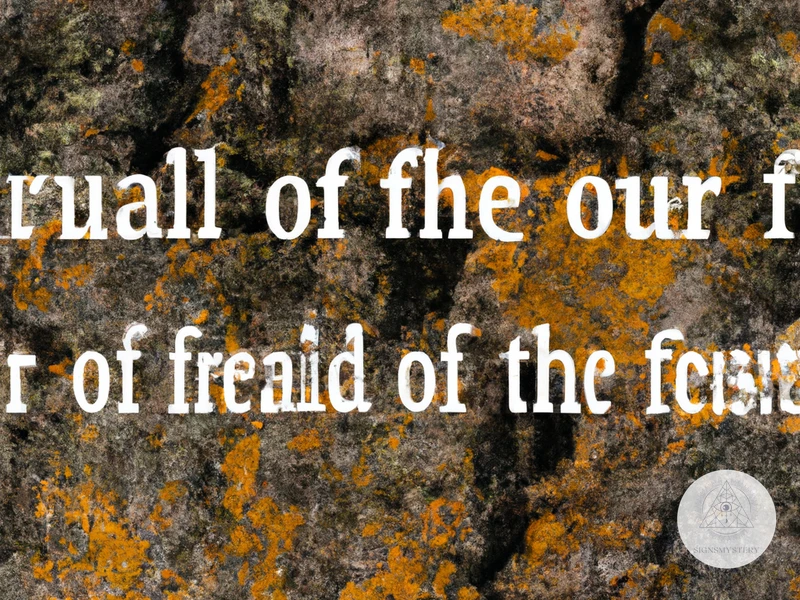Shamanic breathwork is a powerful tool for self-discovery, transformation, and healing. Through a combination of intentional breathing techniques, visualization, and connection to the four elements, shamanic breathwork can help individuals access deeper states of consciousness and tap into their inner wisdom. But what exactly is shamanism and how does breathwork fit into it? In this article, we’ll explore the history and modern practice of shamanism, the benefits of breathwork, and delve into the four elements of shamanic breathwork – earth, air, water, and fire. Whether you’re a seasoned practitioner or new to shamanic practices, this guide will provide valuable insights and practical tips for incorporating shamanic breathwork into your daily life.
What is Shamanism?

Shamanism is a spiritual practice that has been around for thousands of years, and is still used today. It involves connecting with the spiritual world, which can include spirit guides, ancestors, animals, and nature. Shamanism is often associated with the use of rituals, ceremonial practices, and altered states of consciousness, such as through the use of plant medicines or shamanic breathwork. The latter is the use of specific breathing techniques to explore one’s inner self and connect with the spiritual world. Shamanic breathwork involves the use of four elements – Earth, Air, Water, and Fire – to facilitate healing, transformation, and spiritual growth. Those who practice shamanism believe that everything is interconnected and that spiritual healing can have a profound impact on physical, emotional, and mental well-being.
The History of Shamanism
Shamanism is an ancient spiritual practice found in various cultures around the world. Its origins can be traced back to the Paleolithic period, which dates back 30,000 years or more. Shamanic practices are believed to have emerged independently in different cultures, but share common principles and beliefs.
Shamanism involves connecting with the spirit world and using the power of nature to promote healing, spiritual growth, and personal transformation. Shamans often use various methods, such as drumming, chanting, dancing, and plant medicines, to enter altered states of consciousness and communicate with the spiritual realm.
Shamanic traditions have been found in many cultures, including Indigenous communities of North and South America, Africa, Asia, Europe, and Australia. Shamans have served as healers, seers, and spiritual leaders in their communities, helping people connect with their inner selves, the natural world, and the divine.
The word shaman is believed to have originated from the Tungus people in Siberia. It was later adopted by anthropologists to refer to spiritual leaders in other cultures who demonstrate similar practices.
Shamanism has faced persecution and suppression in many cultures. The spread of organized religions, colonialism, and cultural assimilation have contributed to the decline of shamanic traditions in some regions. However, many indigenous communities continue to practice shamanism and preserve their spiritual heritage.
In recent years, shamanism has gained popularity in Western cultures as a means of personal growth, spiritual exploration, and healing. Shamanic practices, such as breathwork, have been integrated into various therapeutic modalities and self-help practices.
The history of shamanism demonstrates the universal human quest for spiritual connection and the power of nature to promote healing and personal growth. To learn more about the science behind shamanic breathwork and how it impacts the brain and body, check out our Science Behind Shamanic Breathwork: Impact on Brain and Body article.
The Role of Shamanism in Modern Society
Shamanism has been a practice of healing and spiritual connection for thousands of years, and it has remained relevant even in today’s modern society. With the increasing popularity of alternative healing methods, shamanic practices have gained more recognition and respect in recent years. The role of shamanism in modern society is to provide a pathway for people to connect with their spirituality, heal emotional and physical wounds, and gain a deeper understanding of themselves and the world around them.
One of the main benefits of shamanism is that it provides an opportunity for individuals to connect with nature and the divine. In our fast-paced, technology-driven world, people often feel disconnected from the natural world. Shamanism offers a way to reconnect with nature and find meaning and purpose in life. By connecting with the natural world, people can find a sense of peace and harmony that they may not have experienced before.
Another way that shamanism helps modern society is by providing a way to heal emotional and physical wounds. Modern medicine has made significant advancements in treating physical ailments, but it does not always address the root causes of emotional pain. Shamanic practices, such as breathwork and ritual, can help individuals release emotional trauma and gain a deeper understanding of themselves. Shamanic practices can also improve physical health by reducing stress and promoting relaxation.
Shamanism can also help individuals who are seeking spiritual awakening. Many people feel that traditional religious structures do not provide the answers they are looking for. Shamanic practices offer a more personal and individualized approach to spirituality. Individuals can connect with their own spiritual guides and gain a deeper understanding of their own spiritual path.
Finally, shamanic practices can play an essential role in the integration of psychedelic experiences. Many people turn to psychedelics for healing and spiritual purposes, but the experience can be overwhelming without proper preparation and integration. Shamanic practices, such as breathwork, can prepare individuals for the psychedelic experience and provide a framework for integrating the experience into their lives.
Shamanism has a vital role to play in modern society. It provides individuals with a way to connect with nature, heal emotional and physical wounds, gain spiritual insight and understanding, and integrate psychedelic experiences. As society struggles with the effects of stress, trauma, and disconnection, shamanic practices are becoming increasingly relevant and necessary.
The Power of Breathwork
Breathwork is a powerful tool that can be used for physical, emotional, and spiritual healing and transformation. Through intentional breathing techniques, an individual can access deeper parts of themselves, release old patterns and emotions, and connect with their inner wisdom and intuition. Some benefits of incorporating breathwork into one’s practice include increased clarity, reduced stress and anxiety, improved physical health, and greater self-awareness. In shamanic traditions, breathwork is often used as a way to connect with the spirit realm and receive guidance and insight from spirit guides. Whether used as a standalone practice or in combination with other modalities such as movement or psychedelic therapy, breathwork has the potential to facilitate profound personal growth and spiritual awakening.
The Benefits of Breathwork
Shamanic breathwork combines ancient shamanic traditions with modern breath techniques to create a powerful healing experience. The benefits of breathwork are numerous and can include physical, emotional, and spiritual healing.
One of the primary physical benefits of breathwork is stress reduction. As we breathe deeply and intentionally, we activate the parasympathetic nervous system, which helps to calm our bodies and reduce stress levels. This can lead to lower blood pressure, improved digestion, and a stronger immune system.
Breathwork can also be a powerful tool for emotional healing. Many people report feeling more relaxed, centered, and at peace after a breathwork session. This can be particularly helpful for those struggling with anxiety, depression, or other emotional issues.
Spiritual benefits of breathwork can include increased connection to oneself and a deeper sense of purpose. As we breathe, we can tap into a sense of oneness and connection to the universe, allowing us to gain a new perspective on our lives and the world around us.
Breathwork has been used to address a variety of physical and mental health issues, including addiction, trauma, and PTSD. It can also be a powerful tool for personal growth and spiritual development.
If you’re interested in trying shamanic breathwork, it’s important to find a qualified practitioner who can guide you through the experience. Whether you’re looking for physical healing, emotional support, or spiritual awakening, breathwork can be a powerful and transformative tool on your journey.
Some benefits of breathwork include:
- Stress reduction
- Lower blood pressure
- Improved digestion
- Stronger immune system
- Emotional healing
- Spiritual connection
- Addressing addiction and trauma
- Personal growth and development
If you want to learn more about breathwork, read our article about the history of shamanic breathwork and how it can lead to spiritual awakening, or discover specific breathwork practices such as dancing and movement or connecting with spirit guides.
How Breathwork is Used in Shamanism
In shamanic traditions, breathwork is a powerful tool for accessing altered states of consciousness and connecting with the spiritual realm. Unlike other forms of meditation or mindfulness, shamanic breathwork is often accompanied by music and other sensory stimuli to deepen the experience. It is seen as a way to unlock the subconscious mind, access deep inner wisdom, and heal emotional and spiritual wounds.
One of the ways that breathwork is used in shamanism is for healing trauma. Trauma can become physically stored in the body, leading to emotional and physical symptoms that can persist for years or even decades. By using breathwork to activate the body’s natural healing mechanisms, shamanic practitioners believe they can release this stored trauma and help clients move towards greater wholeness.
Breathwork can also be used as a tool for psychedelics therapy. Some shamanic traditions view breathwork as a natural alternative to psychedelic drugs, which can be powerful tools for healing but also carry risks and potential side effects. By using breathwork to activate the body’s natural DMT production, practitioners believe they can achieve similar results without the risks associated with taking psychedelic substances.
In the future, shamanic breathwork may play a role in the integration of western medicine and psychology with traditional shamanic practices. As more research is done on the benefits of breathwork and its potential to heal trauma, it is possible that we will see more integration of these practices into mainstream medicine and psychology. This could have major implications for the future of mental health treatment and spiritual well-being.
Shamanic breathwork is a powerful tool that can be used in a variety of ways to achieve spiritual and emotional healing. It is a practice that is steeped in tradition and has been used for centuries by indigenous peoples around the world. Whether you are looking to heal trauma, explore altered states of consciousness, or simply deepen your spiritual practice, shamanic breathwork can be an effective and transformative tool.
The Four Elements of Shamanic Breathwork

The Four Elements of Shamanic Breathwork are Earth, Air, Water, and Fire. Each element offers a unique energy and quality to the breathwork experience. Earth represents grounding and stability, helping individuals feel connected to the physical world. Air brings release and expansion, allowing individuals to let go of what no longer serves them. Water encourages emotional flow, helping individuals access and process their feelings. Fire represents transformation and passion, igniting inner strength and courage. By incorporating these elements into the breathwork practice, individuals can access deeper levels of healing and self-discovery. To learn more about preparing for your first shamanic breathwork journey, check out our article on breathwork journey preparation.
Earth: Grounding and Stability
Earth represents stability, grounding, and foundation. It is the element that connects us to the physical world. In shamanic breathwork, connecting with the element of Earth can help us to feel more rooted, present, and stable in our bodies. This is especially important for those who struggle with anxiety or feelings of disconnection from the world around them.
To connect with the energy of Earth during shamanic breathwork, one can focus on the sensation of their body touching the ground or floor. Visualizing roots growing from the feet into the earth is another effective technique. This can help to ground the body, mind, and spirit, as well as create a feeling of safety and stability.
Breathing deeply and intentionally, while focusing on the energy of Earth, can also help to release tension and promote relaxation. This can aid in the healing of physical and emotional trauma and promote overall wellbeing.
Incorporating the element of Earth into shamanic breathwork can also help individuals to become more present and centered in their daily lives. By connecting with the physical world and grounding oneself, one can approach challenges and stressors with a greater sense of stability and calm.
As shamanic breathwork continues to become more popular as a form of psychedelic therapy and trauma healing, it is becoming increasingly important to integrate this practice into mainstream medicine and psychological treatment. The future of shamanic breathwork integration holds great potential for improving mental health and wellbeing on a larger scale.
Air: Release and Expansion
As one of the four elements of shamanic breathwork, Air plays a significant role in the practice. In this context, Air represents a space for release and expansion. It’s a symbol of the ongoing cycle of life and death, inviting us to let go of what no longer serves us and make room for new growth.
During a shamanic breathwork session, Air is used to help channel and release stagnant energy, allowing for a sense of lightness and spaciousness. Focusing on the breath can help us become more aware of our physical and emotional blockages and start to release them. As we release what no longer serves us, we can create space for new experiences and a renewed sense of self.
The role of Air in shamanic breathwork is particularly relevant in the release of trauma. Trauma can become trapped in the body, manifesting in physical and emotional pain. Shamanic breathwork can be a powerful tool for releasing trauma and allowing healing to take place. By focusing on the breath and inviting the release of stagnant energy, we can create space for healing and transformation.
Shamanic breathwork can be a useful complement to other forms of therapy, including psychedelic-assisted therapy. In fact, some individuals have described the experience of shamanic breathwork as similar to that of a psychedelic journey, without the use of external substances. Both practices can facilitate a sense of expanded awareness and connection with the self.
Incorporating Air into your shamanic breathwork practice can be a transformative experience. By embracing the element of release and expansion, you can create space for growth, healing, and transformation. If you’re interested in exploring shamanic breathwork further, you may want to consider working with a trained practitioner. They can guide you through the process and help you navigate any challenges that arise.
Water: Flow and Emotion
Water is a powerful element in shamanic breathwork because it represents emotions and the flow of energy. When we work with the element of water, we are working with the ebb and flow of our own emotions. Breathwork can help us to release stuck emotions and allow them to flow freely through our bodies so that we can experience healing.
In shamanic traditions, water is often associated with the feminine energy and is seen as a symbol of the unconscious mind. This makes water an important element to work with during breathwork, as it allows us to tap into the depths of our own inner wisdom and intuition.
By connecting with water during our breathwork practice, we can experience a sense of deep release and surrender. This allows us to let go of any emotional blocks that may be preventing us from experiencing true healing and acceptance of ourselves. We can use our breath to move through any resistance we may feel and allow our emotions to flow freely.
During a shamanic breathwork session, it is not uncommon for participants to experience a release of tears or feel a deep sense of emotional release. This is a sign that the water element is at work, and that we are allowing ourselves to deeply connect with our emotions.
If you are struggling with emotional issues, such as trauma or depression, shamanic breathwork can be an incredibly powerful tool for healing. By working with the element of water and allowing your emotions to flow freely, you can experience a sense of release and transformation that can be truly life-changing.
To learn more about shamanic breathwork and how it can be used to heal trauma, you can read our article on Shamanic Breathwork for Healing Trauma. Additionally, if you are interested in learning about the connection between shamanic breathwork and psychedelic therapy, you can read our article on Shamanic Breathwork and Psychedelic Therapy.
Fire: Transformation and Passion
Fire is a powerful element in Shamanic Breathwork, symbolizing transformation
Subscribe to Our Newsletter
Sign up to receive the latest news and updates.
One way to connect with fire energy in breathwork is through visualization. During the practice, individuals can visualize themselves surrounded by flames, feeling the intense heat and energy of the fire. This imagery can help to release old patterns and behaviors that no longer serve them, clearing the way for transformation and growth.
Another technique for working with fire energy is through the use of movement. For example, individuals may incorporate dance or expressive movement into their breathwork practice, allowing the energy of fire to fuel their movements and inspire passion and creativity.
Breathwork practitioners may also work with specific breathing patterns to connect with fire energy. One such pattern is the “breath of fire,” a rapid, rhythmic breath that mimics the intensity and heat of a flame. This technique can help individuals release stuck energy and ignite their inner fire, promoting transformation and growth.
Working with fire energy in Shamanic Breathwork can be a potent tool for transformation and passion. By harnessing the power of this element, individuals can ignite their inner flame and catalyze profound change in their lives.
How to Practice Shamanic Breathwork
Preparing for a Shamanic Breathwork session is key to getting the most out of the experience. First, it’s important to find a comfortable and safe space where you won’t be disturbed. Start by taking some deep breaths into your belly and focus on relaxing your body. Setting intentions is a crucial part of the process, as it creates a clear path for your journey. Choose a specific area of your life that you’d like to work on, and hold that intention throughout your practice. When starting your Breathwork practice, remember to use the proper technique. Breathe in through the nose and out through the mouth, allowing the breath to move deeply into the body. Remember, this practice is not easy and may bring up intense emotions, so remember to be gentle with yourself. After your practice, take some time to reflect and integrate any insights that came to you.
Preparing for Your Breathwork Journey
Preparing for Your Breathwork Journey begins with finding a peaceful and comfortable place to practice. This will help you focus on your breath and the journey ahead. Ensure you have enough time for your practice without interruptions, preferably an hour or more.
Before starting the practice, make sure to clear your mind and set your intentions. Think about what you want to focus on during your journey, the areas in your life where you need healing or insights. It’s essential to have a clear intention and purpose in mind before starting the practice.
Another essential aspect of preparing for your breathwork journey is setting up the props. A comfortable mat or cushion to sit on, blankets to cover yourself, and a gentle light source to maintain a calming environment are essential. If you’re using music during your practice, ensure that it’s already prepared and ready to go.
Finally, it’s important to note that you should not practice breathwork alone if you’re new to the practice. Find a trusted and experienced practitioner to guide you through the journey for your safety and well-being. Consult with your healthcare provider before starting this or any other new practice, especially if you have any medical conditions.
Preparing for a breathwork journey should be taken seriously, with much attention on creating the perfect atmosphere and mindset for the practice.
Setting Intentions and Creating Ritual
Setting intentions and creating a ritual can enhance the effectiveness of your shamanic breathwork practice. When you set an intention, you’re giving the experience a specific purpose, which can help you to focus on your desired outcome. Creating a ritual can help you to enter a meditative state and connect more deeply with your inner self. Here are a few tips for setting intentions and creating a ritual for your shamanic breathwork practice:
Setting Intentions:
| Tip: | Action: |
| 1. | Take time to reflect on what you want to achieve through your breathwork practice. |
| 2. | Write down your intention in a journal or on a piece of paper. |
| 3. | Make your intention specific and positive, and focus on what you want to gain rather than what you want to avoid. |
| 4. | Read your intention before you begin your breathwork practice to help you stay focused. |
Creating a Ritual:
- Tip 1: Choose a quiet and peaceful space where you won’t be disturbed. This can be indoors or outdoors, depending on your preference.
- Tip 2: Set the mood by lighting candles, burning incense, or playing soft music. This can help you to relax and enter a meditative state.
- Tip 3: Begin your ritual with a grounding exercise, such as placing your feet on the ground and visualizing roots growing from them into the earth.
- Tip 4: Use a breathing technique such as pranayama to prepare your body for the shamanic breathwork practice.
- Tip 5: State your intention aloud or silently before you begin your shamanic breathwork practice.
- Tip 6: After your practice, take time to reflect on your experience and write down any insights or messages you received.
By setting intentions and creating a ritual for your shamanic breathwork practice, you can deepen the experience and connect more fully with your inner self. Remember to stay open to whatever comes up during your practice and trust in the power of your breath.
The Breathwork Practice
The breathwork practice is the heart of shamanic breathwork. It is a powerful tool for accessing the subconscious mind and promoting healing on all levels of the body, mind, and spirit. To practice shamanic breathwork, it is important to create a safe and comfortable space where you can fully surrender to the experience.
Breathwork Techniques
There are many different breathwork techniques used in shamanic practice, each designed to achieve a specific purpose. These include circular breathing, holotropic breathing, rebirthing, and transformational breathwork. Circular breathing involves breathing in a continuous circle, with no pause between the inhale and exhale. Holotropic breathing involves rapid breathing designed to induce an altered state of consciousness. Rebirthing involves revisiting the birth experience through conscious breathing. Transformational breathwork involves deep breathing into the diaphragm, with a focus on integrating energy and emotions.
Preparing for the Practice
Before beginning the breathwork practice, it is important to prepare the body and mind for the experience. This may involve stretching, meditation, or bodywork to release tension and increase flexibility. It is also important to make sure the space is clean and free from any distractions or interruptions.
The Breathwork Journey
During the breathwork journey, the focus is on the breath. Participants are encouraged to breathe deeply and rhythmically, allowing themselves to fully surrender to the experience. It is common for participants to experience a range of emotions, from euphoria to fear to grief. The breathwork journey is an opportunity for catharsis, as participants release pent-up emotions and energy that may be blocking their growth and healing.
Integration and Self-Care
After the breathwork practice, it is important to take time for integration and self-care. This may involve journaling, talking to a trusted friend or therapist, or engaging in soothing activities like spending time in nature or taking a warm bath. It is also important to honor the body’s needs, such as getting adequate rest and nourishment.
The breathwork practice is a powerful tool for healing and transformation. By practicing shamanic breathwork, individuals can access their subconscious mind and release blocked energy and emotions. It is important to approach the practice with openness and respect, and to take the time for preparation, the journey itself, and integration afterward. With dedication and practice, shamanic breathwork can be a powerful catalyst for growth and self-discovery.
Integration and Self-Care
After completing a shamanic breathwork session, it is important to take time for integration and self-care. Integration will help you to consolidate the insights and experiences gained during the breathwork session, while self-care will nourish and support your physical and emotional body.
One of the most important aspects of integration is to journal about your experience. Write down any thoughts, emotions, or images that came up during the session. Reflect on what you learned about yourself and how you can apply these insights to your daily life. This will help you to fully integrate the experience and make sense of any new perspectives or understandings that you gained.
It’s also important to prioritize self-care after a breathwork session. This might include taking a warm bath, practicing gentle stretches, or simply relaxing and giving yourself some quiet time to rest. Be sure to drink plenty of water and nourish your body with healthy foods. You may also want to reach out to a supportive friend or therapist, who can help you process any difficult emotions that came up during the session.
Finally, remember that self-care isn’t just something that you do after a breathwork session. It’s something that you can practice every day, in small ways. Take time to nourish your body and mind with healthy food, exercise, meditation, or whatever activities make you feel calm and centered. This will help you to cultivate a strong foundation of self-care, which will support you on your shamanic breathwork journey and beyond.
Conclusion
In conclusion, Shamanic Breathwork is a powerful tool for personal growth and transformation. By working with the four elements – Earth, Air, Water, and Fire – we can tap into the vast wisdom and healing energies of the natural world.
Through the power of deep breathing and intention setting, we can clear out old beliefs and patterns, connect with our inner selves, and manifest our deepest desires. The benefits of Shamanic Breathwork include increased self-awareness, emotional healing, physical rejuvenation, and spiritual awakening.
To get the most out of your Shamanic Breathwork practice, it is important to approach it with reverence and respect. Take the time to prepare yourself both mentally and physically before each session, and create a sacred space that feels safe and welcoming.
Remember that your breath is a powerful tool that can help you connect with the elements and access the wisdom of the natural world. By setting clear intentions and allowing yourself to be open to the experience, you can go on incredible journeys of self-discovery and transformation.
So if you’re looking for a powerful way to deepen your spiritual practice and connect with your inner self, consider giving Shamanic Breathwork a try. Whether you’re a seasoned practitioner or just starting out, there are countless benefits waiting for you on the path of the elements.
Frequently Asked Questions
What is the main goal of Shamanic Breathwork?
The main goal of Shamanic Breathwork is to achieve a heightened state of consciousness and connect with the spirit world.
What are the benefits of practicing Shamanic Breathwork?
Some of the benefits of Shamanic Breathwork include stress relief, emotional release, increased self-awareness, and spiritual growth.
Do I need any prior experience to practice Shamanic Breathwork?
While prior experience with breathwork or meditation can be helpful, it is not necessary to practice Shamanic Breathwork. Beginners are welcome.
What can I expect during a Shamanic Breathwork session?
During a Shamanic Breathwork session, you can expect to engage in rhythmic breathing, music, and movement. You may experience altered states of consciousness, emotions, and physical sensations.
Is Shamanic Breathwork safe?
When practiced properly and with a trained facilitator, Shamanic Breathwork is generally considered safe. However, it may not be suitable for individuals with certain medical or psychiatric conditions.
How does Shamanic Breathwork differ from other types of breathwork?
Shamanic Breathwork incorporates elements of traditional shamanic practices, such as the use of music and movement, and a focus on connecting with the spiritual realm.
What is the role of the facilitator in Shamanic Breathwork?
The role of the facilitator in Shamanic Breathwork is to create a safe and supportive environment, guide participants through the breathing process, and assist with any emotional or physical experiences that may arise.
Can Shamanic Breathwork be used for self-healing?
Yes, Shamanic Breathwork can be used for self-healing. Many individuals use it as a tool for self-discovery and personal growth.
How often should I practice Shamanic Breathwork?
The frequency of Shamanic Breathwork practice can vary depending on individual needs and goals. It is recommended to start with once or twice a month and adjust as necessary.
Is Shamanic Breathwork a religious practice?
Shamanic Breathwork is not a religious practice, but it does incorporate spiritual elements. It is open to individuals of all faiths and beliefs.










